How will these resources help you?
Many lessons are taught about Bristol, often using the city as a case study at GCSE, but are we telling the full story? It is easy to gloss over the less salubrious parts of Bristol’s past, but these are vital to consider if we are to fully understand the city of today. These resources start with the connection of Bristol to the transatlantic trade in enslaved people, which led to the development of industries ranging from cotton mills and cigarette factories to sugar refineries and breweries. A connection across time is made by looking at a house and the changes it has seen. Contemporary developments in Bristol are explored, including the Temple Quarter Enterprise Zone and Paintworks mixed-use development. Teachers and students can further explore creative industries in Bristol, improvements to infrastructure and different views of gentrification in the city.
What impact has transatlantic slavery had on Bristol?
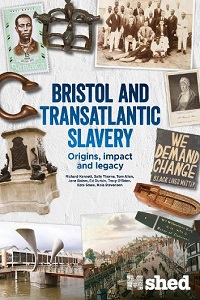
Bristol and Transatlantic Slavery: Origins, Impact and Legacy
by Richard Kennett et al, published by Bristol Books CIC, (2021), 9781909446274
Written by history teachers after wide consultation, this book is also a must-read for any geography teacher who teaches Bristol as a case study of a UK city. The removal of the statue of Edward Colston by protesters in 2020 is an entry point to investigating Bristol’s slave economy. The Origins section sets the scene, exploring the development of the transatlantic trade, including Colston’s role. The Impact section looks at the slave economy in and beyond Bristol, including a focus on a wealthy businessman and the enslaved person he 'owned'. The Legacy section explores how transatlantic trade has shaped the Bristol of today, including migration and racism. In its conclusion, the book challenges us to think about how we should remember Bristol’s slaving past, suggesting options for discussion. It inspires us to rethink the stories we tell in our teaching and to tackle vital issues head on.
How has Bristol changed over time?
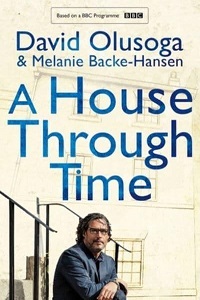
A House Through Time
by David Olusoga and Melanie Backe-Hansen, published by Pan Macmillan, (2021), 9781529037272
This book provides a narrative of the development of three British cities, and is of immense value to geographers in developing our sense of place. It tells the story of individual houses in Liverpool, Newcastle and Bristol. 10 Guinea Street in Bristol still stands by the docks in the city centre and has seen great change since it was built in 1718. We learn about the great wealth some Bristolians gained, not only directly from the transatlantic slave trade, but also through the 'compensation' awarded to them on its abolition. This wealth developed Bristol’s infrastructure, education sector and more. We can use stories such as that of 10 Guinea Street to help our students understand how the past has shaped the future of cities such as Bristol, and at what terrible human cost.
How is Bristol’s Temple Quarter being regenerated?
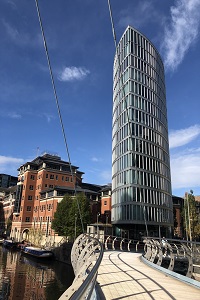
Temple Quarter and St Philip’s Marsh: A vision for the future
by The Bristol Temple Quarter and St Phillip's Marsh Regeneration Programme, (2021)
The 1980s saw Bristol’s city centre docks fall into decline, with Victorian industrial buildings left derelict and workers in traditional industries unemployed. Temple Quarter had become an area of decline and deprivation. It became an Enterprise Zone in 2012, with streamlined planning controls and reduced business rates. This document shows the progress made in creating ‘a sustainable and flourishing new urban area, a place that is welcoming to all...and builds on Bristol’s strengths as a world class city.’ It also looks to the future, including the building of the new campus for the University of Bristol, development of Temple Island as a mixed-use area and improvement of the transport hub at Temple Meads. Sustainability and resilience in the face of climate change are themes running through this report. This very readable resource is ideal for use with students to explore how Bristol has moved on from its traditional industrial past to become a centre for technology and innovation.
Pic © Catherine Owen, 2022.
Pic © Catherine Owen, 2022.
How is creativity and innovation encouraged at Paintworks?
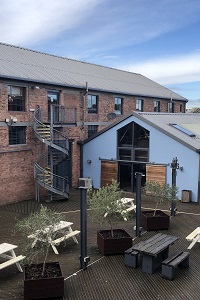
What is Paintworks?
by Verve Properties 2016-2022
In 1850, Phoenix Wharf on the River Avon was home to a paint and varnish factory. As manufacturing declined the site was almost completely derelict by 2000. Verve bought the site in 2003 and work began on Paintworks, within the Temple Quarter Enterprise Zone. This website includes a fascinating Before and After Gallery, illustrating progress in creating ‘an entirely new, vibrant, mixed-use district out of a previously derelict industrial complex.’ The old industrial buildings have either been repurposed to make work units to rent or cleared for apartments. Innovation and creativity are at the heart of this development but, while it has brought great benefits in terms of jobs and housing, with many sustainable features, students can also look critically at issues such as soaring house prices and lack of affordable housing for local people.
Pic © Catherine Owen, 2022.
Pic © Catherine Owen, 2022.
Audiovisual clip
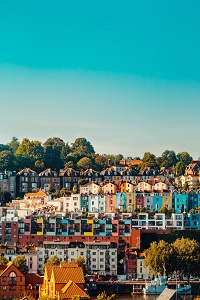
A House Through Time - Number 10 Guinea Street in Bristol
published by BBC
This clip focusses on the history of one specific house in Bristol: 10 Guinea street.
Further materials
Bristol’s film and TV production sector sees ‘rapid’ growth despite Covid disruption by Andrew Arthur, published by BusinessLive, (2022)
Read this article
How is the Tide of Gentrification Affecting Fishponds? by Betty Woolerton, published by Bristol 24/7, (2022)
Read this article
Catherine Owen is Head of Geography at The King Alfred School an Academy, a CGeog and a Geographical Association Consultant. She writes and presents for OUP, Hodder Geography, Tutor2U and more.
Text © Catherine Owen, 2022-2023
Text © Catherine Owen, 2022-2023



